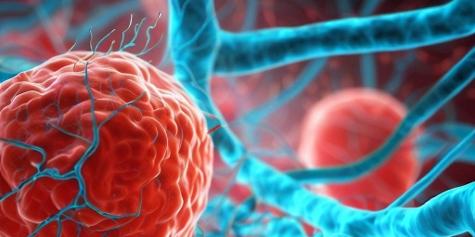– Molecular imprinting processes in the cells of the tumor blood vessels provide information about conditions in the cancer tissue. The University Hospital Erlangen can now report exciting discoveries in the field of colon cancer therapy.
Colon cancer is the third most common type of cancer worldwide. Around a million people die from this disease every year. Researchers are working to better understand the conditions and processes in cancer tissue so that specific and more effective therapies can be developed. The working group of Prof. Dr. Elisabeth Naschberger from the Molecular and Experimental Surgery Section (Head: Prof. Dr. Dr. Michael Stürzl) of the Surgical Clinic (Director: Prof. Dr. Robert Grützmann) at the Erlangen University Hospital has now published surprising results: They show that endothelial cells that… blood vessel cells in the cancer tissue, after their isolation in cell culture, reveal the different conditions to which they were exposed in the tumor and can be used as “eyewitnesses” from the cancer tissue.
Focus on tumor cells
Cancer research initially focused primarily on tumor cells, but over the past ten years it has become clear that looking at them alone is not enough to fully understand and efficiently combat cancer. The reason is that the cancer cells are embedded in the surrounding tissue, which consists of a network of many different cells. These include immune cells, fibroblasts and endothelial cells, all of which interact with the cancer cells via numerous messenger substances. This interaction in its entirety is referred to as the tumor microenvironment. Depending on the patient and the specific interactions between cell types involved, the microenvironment can promote or prevent tumor growth, but can also have a decisive influence on the response to oncological treatment.
Accumulation of genetic changes
A cancer cell arises due to an accumulation of genetic changes that are stably maintained. Therefore, the changed properties of cancer cells can be examined in culture even after isolation. In contrast – according to the previous assumption – corresponding studies on endothelial cells of cancer tissue are not productive because they do not have stable tumor-specific characteristics and lose their memory of the specific conditions in the tumor after isolation. Prof. Naschberger specifically questioned this assumption. In her studies, she focused on endothelial cells because they also represent a therapeutic target. The cell biologist and physician Prof. Dr., who died in 2008, developed In 1972, Judah Folkman from Harvard Medical School in Boston hypothesized that by inhibiting the tumor blood vessels, the tumor could be “starved” and, as a result, the growth and spread of cancer cells could be therapeutically inhibited. In fact, using this approach, Judah Folkman was able to completely inhibit most forms of cancer, but only in mouse models. The use of this therapy in humans resulted in much less spectacular results. It was assumed that the reason for the poorer effect in humans lies in the microenvironment, which is built up much longer and varies from tumor to tumor.
Long residence time ensures imprinting
Prof. Naschberger concluded that in humans – in contrast to mice – the long residence time of the endothelial cells in the tumor microenvironment could lead to these cells taking on certain microenvironment-specific functions in the form of an imprint and maintaining them stably in the culture. The analysis of the different imprints could provide important information about the conditions in the tumor in the form of an “eyewitness report”. To test this, Elisabeth Naschberger established suitable isolation methods for endothelial cells from human colon cancer tissue for the first time and systematically analyzed the entirety of gene mutations, gene expressions and epigenetic modifications in these cells using modern methods. These analyzes showed that the tumor vascular endothelial cells maintained different specific functions depending on the clinical prognosis of the original disease, which were primarily stably fixed via epigenetic imprinting. Prof. Naschberger also found that the specific gene expression pattern of the cultured endothelial cells could predict the prognosis of the patients. She explains: “These results show that cultured endothelial cells from the tumor can serve as ‘eyewitnesses’ to the different conditions in the tumor. In addition, the cultured cells enable specific tests of tumor function and response to therapy.”
Hope for improvement
The researcher hopes that, thanks to this approach, the very different response of those affected to blood vessel-inhibiting tumor therapy can be improved in the future. Prof. Stürzl, head of the section, is very pleased with the results: “I still remember how Prof. Naschberger’s first applications for funding for this project were rejected with the reference that endothelial cells from the tumor change so much in culture that “You can’t learn anything about the conditions in the tumor. I am therefore all the more pleased that the results you achieved with a lot of perseverance were able to modify this firmly held opinion and that this will hopefully benefit cancer patients.” The results were published in the high-ranking international journal Cancer Communications.
Link to the study: https://doi.org/10.1002/cac2.12489

